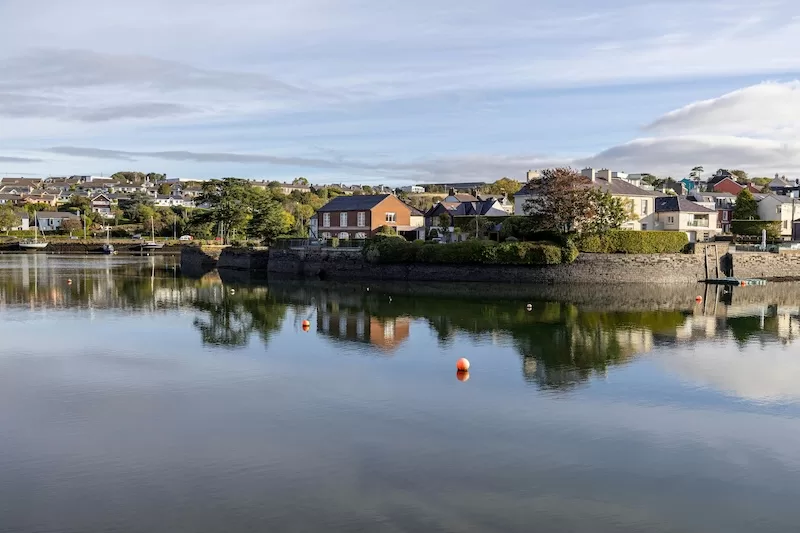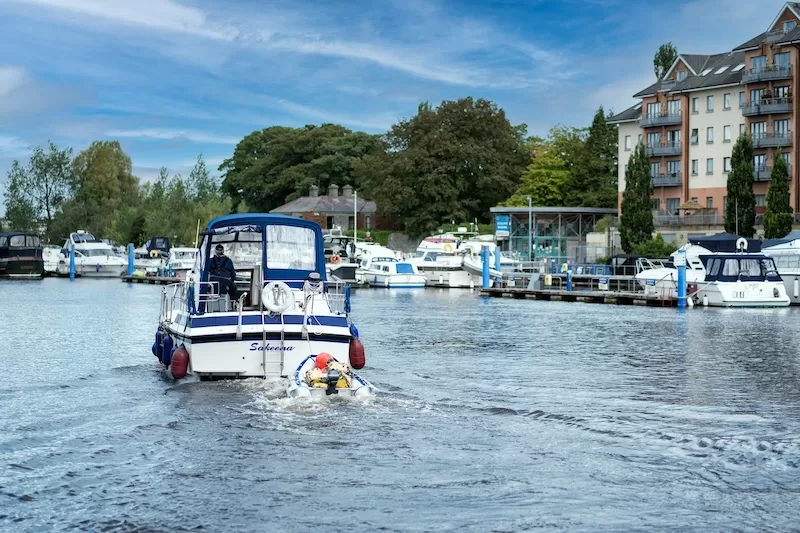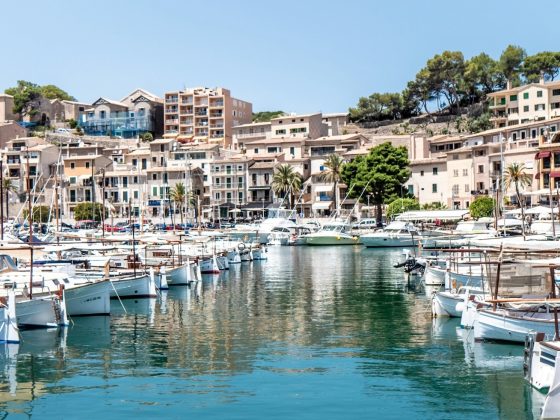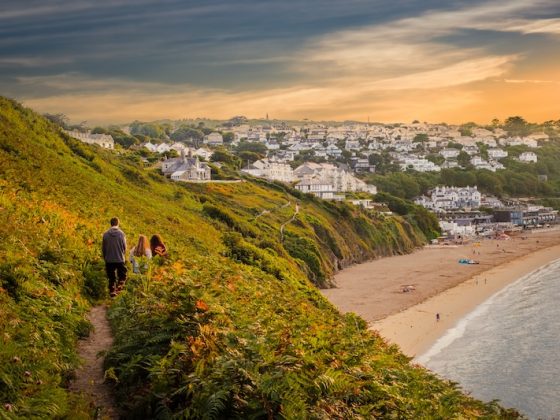Introduction
Retirement often arrives like a change in the tide. One day the routine feels fixed, the next there is a question waiting: what would life look like if time finally belonged to you? For some, that answer leads across the Atlantic. Many seek to retire in Ireland, drawn to a place that feels familiar from stories but remains surprising in its daily beauty.
There is the chill of sea air in the morning. The murmur of conversation drifting from a village café. Roads that wind past fields dotted with sheep and castle ruins that never seem to age. Ireland offers the space to slow down, but also the structure to feel rooted. Tradition still matters here. So does neighborly kindness, a shared laugh, and a good walk when the clouds clear.
This new chapter deserves planning that feels grounded rather than rushed. The right place. The right budget. The right expectations. Ireland can be a rewarding home for retirement, but only with a clear picture of what life here truly costs and provides.
In this article, the aim is to provide a realistic overview of what it means to retire in Ireland: how much you might spend, how the healthcare and pension system work, where you might live and what trade-offs you should expect.
Why consider retiring in Ireland
Quality of life and culture
Ireland offers a level of life that often surpasses expectation. Outside of the major cities crime rates are low and the general pace of life is conducive to settling into a new rhythm. Culture is not museum-glass protected, but alive. Traditional music flows from small pubs, markets bustle on weekends, and history shows up on every corner in stone, iron and folklore.
What matters most to newcomers is how quickly a place feels like it could be home. Ireland’s instinct for hospitality is not myth. The Gaelic phrase “céad míle fáilte” quite literally promises a hundred thousand welcomes, and surveys suggest the sentiment holds up. In a global study, the country ranked 23rd for ease of settling in and 20th for friendliness, with only 4% of respondents reporting negative feelings about the general warmth of the population, compared with 15% worldwide. About three-quarters of expats say local culture is easy to embrace.
Kindness might sound simple, but it changes everything. When you arrive in a place with unfamiliar roads and no familiar faces, a friendly greeting, a helpful direction, or even a shared joke can instantly shrink the distance. In Ireland that welcome is not a performance. It is simply how things are done.
Landscapes that shape you
Ireland’s geography sets a tone for each day.
Crashing Atlantic waves along the Cliffs of Moher. Rolling green in Tipperary. The beauty of Connemara bogland under soft light. The textures of the land invite a more attentive, reflective life. A morning might begin with a shoreline walk and end near a peat fire, listening to the rain draw patterns on the windows.
Choosing to retire in Ireland means choosing a backdrop for the next chapter.
Coastal villages bring sea breeze and seasonal energy. Inland towns offer a more peaceful vibe, with neighbors who wave every time you pass. Some retirees even split the year, shifting with the weather like migrating birds.

An English-speaking home abroad
Starting fresh in later life becomes easier when you do not need to learn the local alphabet to ask for a pharmacy or laugh at a joke. Ireland’s shared language with many newcomers reduces friction in doctor visits, banking, forming friendships and simply talking to the person behind the bakery counter. It helps the unfamiliar feel familiar more quickly.
Easy links to the wider world
For many retirees, staying connected with loved ones matters just as much as finding calm. Ireland’s airports keep the world within reach. A flight to the U.S. East Coast can be shorter than some domestic trips in larger countries. Family visits feel possible, not rare.
A balance between cities and countryside
Some days call for a concert, a specialist doctor, or a world-class museum. Other days call for a cycle session by the shore or a pint with regulars. Ireland lets you pick both without uprooting your life. Dublin, Cork and Galway offer full urban energy. Fifteen kilometers away, cows outnumber people and time stretches.
Financial realities of retirement in Ireland
Retirement planning is part arithmetic, part imagination. You picture the life you want, then check if the numbers can carry it. For anyone hoping to retire in Ireland, the financial landscape deserves a closer look, not to diminish the dream, but to make sure the dream stands firm.
Cost of living and typical annual expenditures
Knowing what you’ll spend is key to any retirement plan. According to a recent report by the Pensions Council and KPMG, a single retiree in Ireland aiming for a “comfortable” standard would need around €33,600 per year (≈ $36,000 USD) and a couple about €43,200. Other sources suggest that annual costs for retirees vary widely from €21,600 to €42,000 depending on housing, lifestyle and medical needs. These numbers assume mortgage‐free home ownership in many cases; if rent or mortgage payments apply, costs can increase significantly.
Think of retirement expenditure as the size of a garden hose. If your housing and health services are fully covered then you might only need a trickle of income. But if you still carry large, fixed costs the hose needs to be wider: your required income must be larger.
State pension, private savings and income streams
The state pension in Ireland is not designed to cover all retirement lifestyle costs. According to one survey, 98% of older respondents did not believe the state pension alone would support their retirement adequately. Average pension savings among workers in Ireland stand at roughly €111,000 (≈ $120,000 USD), which financial advisers flag as insufficient for meeting more comfortable lifestyle expectations.
Most people moving here later in life knit together several streams:
- National pension
- Private pension savings
- Long-term investments
- Possibly rental or part-time income
It becomes less about one perfect source and more about a balanced blend that supports changing needs through time.
Taxation, residency and overseas income
Ireland welcomes new arrivals, but the bureaucracy still weighs. For non-EU retirees, the government generally expects €50,000 in annual income plus access to a safety cushion for unexpected costs.
Foreign income often remains taxable in Ireland once residency is established, though age-related tax credits and treaty agreements can soften the impact.
Preparing for what the years bring
Health care can be affordable, yet long wait times for public services push many retirees toward private insurance. Inflation, too, plays a subtle role in retirement planning. A budget that feels comfortable today must still feel steady ten years from now. This chapter of life should not feel fragile. Budgeting for Ireland means embracing optimism with guardrails: a plan that gives you freedom without the fear of miscalculating what tomorrow demands.
Healthcare and Insurance for Retirees in Ireland
Healthcare shapes daily stability in retirement, so understanding Ireland’s system can quiet a lot of worries before you ever board the plane. The country offers a blend of public coverage and private options, together creating a safety net that supports most medical needs though with some nuances worth knowing well.
Public care and the comfort of structure
Ireland’s Health Service Executive (HSE) operates a tax-funded system that provides access to essential care, emergency services and referrals to specialists. For older adults used to private insurance environments, it feels reassuring to know that if life surprises you (a fall on a rainy footpath, a sudden infection) immediate care is there without a stack of bills. Wait times, however, are a real consideration. For non-urgent procedures or specialist appointments, patience becomes part of the process. The laidback pace can feel cozy in most areas of life, but not when you are waiting to breathe easier or regain mobility.
Tip to manage it:
Choose a home within reach of a major hospital and GP services. The difference between 15 minutes and 90 minutes can define a very important day.
Private insurance for faster access
Many retirees supplement the public system with private insurance to shorten waiting lists and gain more control over specialist care. Plans often cover a significant portion of consultations, diagnostic scans and surgeries. Think of this as choosing the express lane when your health needs to move faster.
Premiums vary but are generally manageable if budgeted early. For those with chronic conditions or who want quicker screenings as they age, private insurance becomes a must rather than a luxury.
Tip to manage it:
Plan your private policy before relocation. Some insurers have waiting periods, and securing coverage early avoids interruptions in treatment.
Staying well in daily life
One advantage of Ireland’s landscape: it invites you to move without calling it exercise. Clifftop paths, forest walks, bike-friendly lanes and community sports clubs make wellness feel less like a chore and more like a ritual. Meanwhile, pharmacies and GPs in small towns often become friendly fixtures in your week. You’re not a number here. You are someone whose story the receptionist remembers.
Tip to manage it:
Make health part of your routine: weekly club meets, regular drives to larger towns for checkups, and winter Vitamin D care when sunlight grows shy.

Medications and access over time
Most common medications are readily available, and pharmacists often act as first points of care for minor concerns. As the years stretch on, your treatment plan can stretch with you. Changing providers is easier when the system recognizes continuity.
Tip to manage it:
Bring full medical records when you move and keep digital copies. It smooths transitions and protects you from having to retell your health history in urgent moments.
Best regions and towns to retire in Ireland
Coastal versus inland choices
Each Irish landscape writes a different kind of day. By the sea, mornings smell like salt and seaweed, gulls circle overhead, and the breeze has a habit of waking you early. Cafés set out chairs facing the water. The same conversations play out each morning, spoken by people who have lived beside the tide long enough to know that weather and mood can change in an instant.
Inland, fields stretch in long greens. Roads curve through tranquil towns, and, when the wind picks up, chimneys puff smoke and locals settle into conversation that drifts from the news to a neighbor’s birthday without any hurry at all.
Killarney in County Kerry shows the beauty of coastal energy, even without open ocean at its doorstep. It sits beside a vast national park, where mountain silhouettes frame the lakes. The community has grown around visitors who come to see that beauty, so life moves a bit faster in summer. There are galleries to browse, jaunting cars trotting down the street, and no shortage of things to do. Perfect for people who want motion and human contact built into their everyday.
Westport in County Mayo tilts more toward the inland personality. A handsome Georgian town center, low brick facades, walking and cycling trails that pull you into nature instead of spectacle. It is close enough to the coast for weekend adventures but far enough that you will never feel rushed by short-term tourism. Friendships here tend to grow deeper roots, watered by slower days and familiar faces gathering in the same cozy places each evening.
The question becomes less “Which is cheaper?” and more “How do you want time to feel?”
By the sea: bright, energetic, shared.
Inland: steady, rooted, rich.
Both versions of Ireland can hold a very good life. The art is choosing what comforts you most: the horizon or the hearth.
Urban hubs versus rural retreat
Cities in Ireland deliver culture at your doorstep. Concerts on a Tuesday night. A good latte on the corner. Hospitals and specialists within reach. Places like Galway feel lively in a way that keeps the mind awake. Music spills into the streets, students mix with older adults, festivals fill calendars. Retirement here feels less like slowing down and more like shifting into a new kind of participation.
But sometimes a whisper feels healthier than a heartbeat. In a rural village, the pub becomes the living room for everyone who walks in. You learn who makes the best brown bread. You start knowing who owns which dog. The scenery does more talking than anyone else. On long walks you hear sheep tearing grass and distant river noise. It is an intimacy that many of those starting a second chapter spend years searching for.

There is also the in-between: a cottage outside a midsize town. Close enough to reach a hospital appointment by midday. Far enough that stars still fill the sky without competition from streetlights. For many, this balance becomes the best version of retirement in Ireland: connected yet peaceful, social yet spacious.
Top 10 list of Retiree-Friendly Towns in Ireland
Kinsale, County Cork
By late morning, half the town has walked the harbor path already. The fishmonger chats while wrapping your order, the bakery saves the rolls you like. Walkability takes the pressure off driving. Even errands turn into conversations. Classes at the community center fill calendars nicely. And when the weather cooperates, the coastal trails near town give you movement that feels like joy rather than obligation. Winters stay mellow. Summer brings new stories to listen to.
Key perks: Strong food culture, water-based recreation (fishing, sailing) and a well-served town center.
Trade-offs: Premium real estate prices and a tourist season that brings extra bustle.

Galway / Salthill, County Galway
Galway gives you reasons to leave the house. There is always a concert, gallery opening or market weaving life into the week. If you prefer quieter days, Salthill’s long promenade lets you walk at your own speed with the Atlantic beside you. Shops, cafés and essential services are close together, and frequent buses keep independence strong even if driving becomes tiring. Major medical care is nearby, which adds peace of mind as years progress. The mix of students, families and older residents creates a lively but grounded environment that keeps life interesting.
Key perks: Cultural life, walks by the shoreline, town amenities.
Trade-offs: Slightly higher cost and the pace may feel brisk compared with a village.

Dún Laoghaire, County Dublin
Dún Laoghaire offers a balance that appeals to many in retirement: a calm promenade and marina lifestyle, paired with access to big-city healthcare and the international airport. Flat walking paths help those who appreciate movement without strain. Local clubs and coastal cafés give easy chances to meet people. When you need specialist care or want to see family abroad, the journey is simple and stress stays low. The community skews friendly and active, with a social vibe that supports both independence and connection.
Key perks: Transport links, strong healthcare access, ease of visiting friends/family abroad.
Trade-offs: Home costs can be steep, and the seaside suburb may carry traffic/commute elements.
Cork City, County Cork
Cork is a city that still feels personal. The English Market becomes a weekly ritual. Grocers, medical care, theatres and cafés are all close, which keeps days smooth and spontaneous. You can choose culture when you want it or slip away to nearby countryside when you prefer quiet. Transport links make appointments easy, and the city’s size maintains comfort without giving up convenience. Cork is for retirees who want variety without overwhelm, independence without isolation.
Key perks: Infrastructure, amenities, regional transport, proximity to countryside.
Trade-offs: City distractions may not suit those seeking full calm.

Westport, County Mayo
Why it works: Named “Best Place to Live in Ireland,” Westport ticks countryside, sea-view and community boxes. The Georgian town centre stays walkable and welcoming, and many daily needs gather around the river. You feel connected to the community simply by showing up at the same bakery twice in one week. Mountains and sea are close enough to inspire weekend excursions that recharge the spirit. Live music and local clubs add warmth to evenings, and the atmosphere suits anyone who likes a gentle pace with friendly company nearby.
Key perks: Walkability, nature (mountain + sea), strong community feel, good amenities.
Trade-offs: More remote than others, fewer major city services within immediate reach.
More budget-friendly / moderate cost tier
Athlone, County Westmeath & Roscommon
Athlone keeps life practical and peaceful. Daily errands follow the river’s path, and most essential services sit within a manageable loop. Healthcare access is strong for a town this size. Costs are more predictable than in coastal hotspots, which makes long-term budgeting less stressful. Evenings may be quiet, but clubs and community events keep the calendar from feeling empty. The Shannon view is a daily reminder that life has space again.
Key perks: Accessibility, smaller town pace, decent amenities.
Trade-offs: Not the dramatic sea-views of a coastal town; winters may feel darker, quieter.
Ardmore, County Waterford
Ardmore is for those who measure happiness in clear skies and familiar faces. The cliff walk delivers some of Ireland’s best coastal scenery, yet the town feels private and unhurried. People here notice when you join the community, and friendships deepen through repetition: weekly mass, Tuesday shopping, evening strolls. Services are fewer than in bigger towns, so occasional drives become part of the routine. In return, Ardmore gives room to breathe and a peacefulness that settles you.
Key perks: Laid-back pace, oceanfront lifestyle, strong sense of place.
Trade-offs: Smaller town means fewer big-ticket services; might require travel for specialist care.
Skerries, County Dublin
Skerries offers a soft landing between village life and city access. Seaside paths, fresh seafood, nature reserves and a gentle town character shape most days. The commuter rail to Dublin keeps hospitals, theatres and family within simple reach. Shops and community activities encourage you to stay local, while mobility remains easy even as needs change. Skerries grants calm without cutting off connection, which is why many retirees choose it as home.
Key perks: Sea-air, nature reserves nearby, commuter rails, moderate cost compared to Dublin proper.
Trade-offs: Slightly less serene than remote villages; market may reflect demand from those still working.
Lahinch, County Clare
Lahinch makes staying active feel effortless. The beach is your gym, the golf course your social circle and the sea your daily mood check. Shops and cafés line the main street, ensuring normal errands fit comfortably into a slow-day schedule. It becomes easy to socialize without forcing it. Summer crowds bring excitement, winter restores peace. Healthcare requires short drives, but most needs remain within reach. For retirees who love nature and routine, the Atlantic delivers.
Key perks: Outdoor lifestyle, beach access, smaller population, friendly rhythm.
Trade-offs: Seasonal visitor spikes; smaller town amenities so may travel for some services.
Kilkenny, County Kilkenny
Kilkenny blends culture and comfort in a way that suits many older adults. The castle grounds double as a pleasant daily walking route. Pharmacies, cafés and shops stay close together, which removes stress from mobility concerns. Festivals and local crafts keep the town lively throughout the year. Public transport connects easily to Dublin for specialist care or bigger outings. Kilkenny gives variety without demanding effort.
Key perks: Walkability, character, historic setting, mid-Ireland location.
Trade-offs: Inland means you trade sea-view for history; fewer walk options along the water.

Risks and Challenges of Retiring in Ireland
Retiring in Ireland offers promise of green hills, walks by the shoreline and friendly evenings. But the practical side matters just as much and for some, the trade-offs could reshape the story you hoped to tell.
Housing pressures and affordability
Picture the shoreline town you fall for. Then realize peak-season visitors drive demand for holiday homes, property prices climb fast and rental options shrink. In scenic coastal counties home values have surged around 60% since 2020, driven in part by retirees and second-homes. For many of those starting a new chapter, the dream of owning or renting something comfortable can bump squarely into reality. Renters in Ireland face particular vulnerability: a recent article described one retiree paying €850 per month in rent alone while trying to make ends meet.
Owning outright is no guarantee. A report found more than 40% of adults in Ireland do not expect to own their home outright by retirement. For a retiree in a country foreign to you, the security of a home matters for more than nostalgia. It is the anchor under everything else.
Tip to manage it:
Consider inland or semi-inland communities where prices remain more stable, or secure long-term leases over seasonal rentals. Visit in low season to see if the town still supports year-round living.
Financial readiness and inflation risk
Retiring means stretching the horizon of your income across decades. In Ireland this is not without concern. One national survey found that roughly 9% of people anticipate relying solely on the state pension or no pension at all. The state system itself ranks among the lowest in Europe for income replacement at age 65-74 compared to earlier earnings. And while living amidst emerald hills might feel slow and steady, the cost of living is anything but static. Health care, housing maintenance, utilities: all climb. For a retiree on a fixed income, each annual increase chips away at what was once comfortable.
Tip to manage it:
Build multiple income sources into your plan: private pensions, investments, rental income or part-time work you enjoy. Treat your budget as dynamic. Adjust every year, not every decade.
Access to services and community realities
Moving to a small Irish town or village has a charm all its own. But imagine getting a specialist appointment, or needing a hospital visit at night, and realizing you’re an hour or more from major services. The trade-off for peace is sometimes distance.
Some can also struggle with isolation. Being welcomed into a community is real but making roots takes time. Retirees arriving without strong ties may feel sidelined. In quieter places public transport may be thin, winter hours long and nights dark earlier than you remember. The sea-air might fill your lungs, but it doesn’t always bring convenience.
Tip to manage it:
Choose a home within 45–60 minutes of a larger town or city. Add private insurance to reduce waiting times. Establish a “medical travel plan” so appointments become routine, not stressful surprises.
For integration, join a walking club, hobby group or volunteer organization early. Ireland’s friendliness unlocks fastest when you show up regularly in the same places.
The long horizon and demographic shifts
Ireland’s beauty is timeless. Its finances? Less so. The population aged 65+ is growing; the system of pensions and public services that supports older adults is under pressure. For a retiree, planning for twenty or thirty years ahead means recognizing that tax regimes, healthcare structure and public service levels could change. Financial models used today may not hold unchanged.
Tip to manage it:
Plan with margin. Keep an emergency fund untouched. Monitor annual policy changes. And, if possible, maintain some financial ties to your home country for diversification.
Read More Like This: Top 10 Things to Know If You’re Moving to Ireland
Step-by-Step Planning Checklist
A well-designed retirement in Ireland does not come together in a rush. It is a series of small, steady decisions that eventually feel like a life. Use this checklist as your compass.
1. Define your lifestyle priorities
Sea breezes or forest walks. Serene village or cultural calendar. Decide how you want your days to feel before searching for homes.
2. Map out your total annual budget
Use realistic local ranges, roughly €21,600 to €42,000 depending on lifestyle and housing. Account for future inflation, not just today’s prices.
3. Assess all income sources
State pension, private pensions, investments, rental income, savings. Make sure the mix supports decades, not just the first five years.
4. Understand residency and visa requirements
Ireland welcomes new arrivals, though the path depends on nationality. EU and EEA citizens can move freely and stay without a special visa. Non-EU retirees usually apply for Stamp 0 residency, which shows that you can support yourself financially without working in Ireland. Expect to demonstrate around €50,000 in yearly income and additional savings for emergencies, along with proof of private health insurance. These permissions are not indefinite and must be renewed regularly, so it helps to think about your long-term financial resilience early on. Processing can take time, and rules are reviewed periodically, so confirming requirements with official government guidance removes surprises later. If your income comes from abroad, make sure you understand how Ireland taxes foreign earnings before you file the first application.
5. Narrow down location
Visit multiple regions in both high and low seasons. Tour medical facilities, grocery shops and transport options during each stay.
6. Evaluate housing stability
Choose long-term leases or properties with good year-round infrastructure. Avoid basing your full retirement plan on a seasonal vacation town unless you’ve experienced it in winter.
7. Plan for healthcare access
Check proximity to hospitals and specialists. Consider private insurance to shorten waiting times.
8. Set up a local support network
Join clubs, community groups, recurring meetups. Friendships take root faster when you show up regularly.
9. Stay informed about tax rules
Foreign income, age-based tax credits and double-tax treaties can shape what you keep. Review annually with a professional who understands cross-border planning.
10. Build financial safeguards
Three cushions help:
- Emergency fund
- Long-term care consideration
- Flexibility in where you live if costs shift
11. Ease in before you leap
Test your chosen town with a long stay. Let real life — not just vacation life — inform your decision.
12. Revisit the plan every year
Life changes. Policies change. A good plan is one that keeps evolving.
Remember: bottom line is you are rewriting what everyday life looks like. Do the math, yes. But also listen to the small things: the way a place makes you feel, the conversations you find, how easy it is to belong.
Your First 100 Days in Ireland
The first weeks shape how a new life begins. Instead of trying to master everything at once, focus on a few small routines that make each day feel steadier.
Week 1
• Register with a local GP and pharmacy
• Get a SIM card or update your phone plan
• Learn the simple paths: grocery, bank, post office
• Say hello to the neighbours who cross your path
Weeks 2–3
• Join one recurring weekly activity that brings you into the community: a walking group, choir, or social club
• Visit the library and sign up for programs
• Test public transport routes, taxi availability and distances to key appointments
Weeks 4–6
• Explore cafés and pubs that feel like “your” places
• Attend a market or fair to meet locals through shared routines
• Walk the paths closest to home until they feel familiar
Months 2–3
• Join a volunteer project or hobby group to deepen friendships
• Plan your first local mini-trip to a neighbouring town
• Attend a seasonal festival or cultural event that makes you feel part of the calendar
Small steps lead to big comfort. One day you notice that the shopkeeper remembers your order, your neighbour stops to chat longer, and the route home feels instinctive. That’s when you know Ireland is no longer a place you moved to. It is a place you live.
FAQs
Q1: How much money do I need each year to retire in Ireland?
Most retirees plan between €21,600 and €42,000 per year depending on housing and lifestyle choices. Build in cushion for healthcare and inflation.
Q2: Can non-EU citizens retire in Ireland?
Yes. Many will need to show around €50,000 in annual income plus financial reserves, along with proof of health insurance and clean background checks.
Q3: Is the Irish state pension enough to live on?
Not for most people. It eases costs but rarely supports the full lifestyle retirees imagine. Private savings or passive income help bridge the gap.
Q4: Will I pay tax on my foreign income?
Often, yes. Irish tax applies to residents’ worldwide income. Double-taxation treaties may reduce the burden, so a tax adviser is valuable.
Q5: How easy is it to make friends in Ireland?
Ireland’s social culture is warm and conversational. Communities welcome newcomers best when you join shared routines: pub quiz nights, walking clubs, volunteer projects.

Q6: Do I need a car?
In major cities, not necessarily. In rural Ireland, almost always. Buses connect regions, but schedules may be limited and evening service sparse.
Q7: How is the healthcare system for retirees?
Public medical care is comprehensive but can involve long waits for non-urgent care. Many retirees use private insurance for faster access to specialists.
Q8: Can I bring my pet to Ireland?
Yes. Most cats and dogs can move with you if microchipped and vaccinated, though paperwork must be followed precisely for entry.
Q9: What is winter like in Ireland?
Cool, wet and full of early sunsets. Some find it cozy and calm. Others struggle with the shorter daylight hours. Choose lighting and local activities that keep spirits bright.
Q10: Should I rent before buying?
It is wise to rent first. A long stay reveals what brochures cannot: winter pace, neighbor dynamics, and how a town truly feels day after day.
Secure Start, Rich Life
Retirement is not the end of motion. It is a change in direction. A shift from racing through days to choosing how they develop. Few places make that transition feel as natural as Ireland. The island lends itself to reinvention through its relaxed mornings, its music-filled evenings and the simple truth that people here tend to look up, greet you and mean it.
To retire in Ireland is to trade noise for nuance. It is choosing landscapes that make you breathe a little deeper. It is finding comfort in small rituals: a warm bakery roll, a walk beside old stone walls, a neighbor who stops to chat even when the rain is coming sideways. What matters most is not just living longer, but living well, and Ireland has a way of reminding people how to do that.
If this country is calling to you, let the curiosity grow. Learn the details. Visit the towns. Test how it feels to wake up in a place where life is calm without being dull, rooted without feeling closed.
A good retirement doesn’t happen by accident. It’s chosen step by step, with excitement leading the way. And maybe one day soon, the path beneath your feet will be Irish grass, the air will taste like the sea, and you’ll know you made the right move.
Subscribe to our newsletter for more data-driven insights and relocation guides that turn curiosity into confident decisions.
Contact Author
"*" indicates required fields
Stay Ahead on Every Adventure!
Stay updated with the World News on Escape Artist. Get all the travel news, international destinations, expat living, moving abroad, Lifestyle Tips, and digital nomad opportunities. Your next journey starts here—don’t miss a moment! Subscribe Now!










